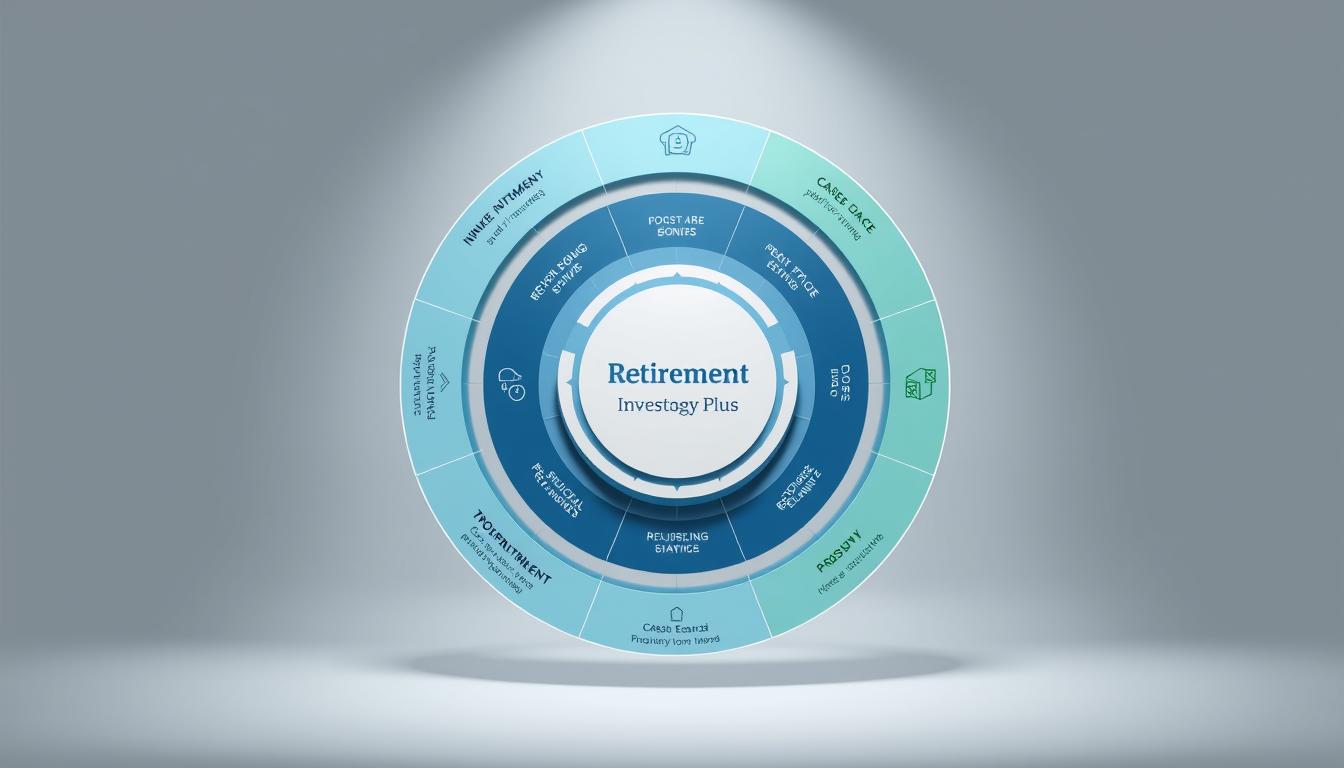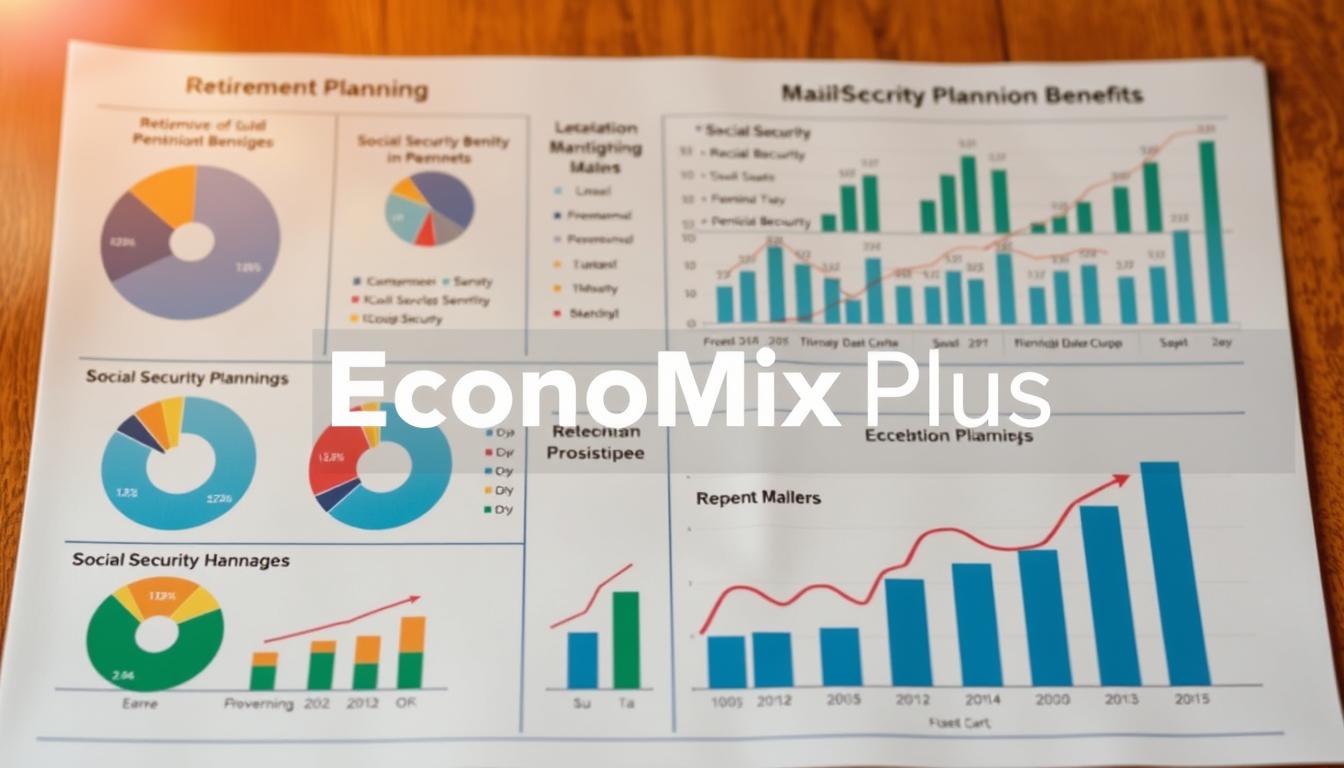What if everything you thought about retirement investing was backwards? While many focus on growing wealth during their working years, the real challenge begins when paychecks stop. How do you ensure your savings last decades while still generating income?
Retirement marks a critical shift: it’s no longer about accumulating assets but preserving and managing them wisely. Experts like Anil Suri from Merrill’s Chief Investment Office emphasize balancing growth with stability. This means reevaluating your portfolio to include stocks for growth, bonds for steady income, and cash reserves for emergencies.
Regular reviews are essential. Markets change, and so do your needs. Adjusting for risks like inflation or market downturns ensures your plan stays resilient. A well-structured strategy doesn’t just protect your nest egg—it helps it grow, even in retirement.
Key Takeaways
- Shift focus from wealth accumulation to preservation post-retirement.
- Balance growth-oriented assets (stocks) with stable options (bonds, cash).
- Review your portfolio regularly to adapt to market changes.
- Prioritize risk management to safeguard against inflation and volatility.
- Use expert insights to create a flexible, long-term income strategy.
Understanding Your Retirement Goals
Retirement isn’t just about leaving work—it’s about designing the life you want next. Start by asking: What does your ideal day look like? Will you travel, downsize your home, or pursue hobbies? These answers shape how you manage your money in retirement.
Assessing Your Financial Needs
Begin with the basics. List monthly expenses like housing, utilities, and groceries. Then, factor in healthcare—Medicare doesn’t cover everything. A 65-year-old couple may spend $315,000 on medical costs, according to Fidelity’s 2023 study. Work with your advisor to estimate these numbers early.
Planning for Healthcare and Lifestyle Expenses
Healthcare often surprises retirees. Include premiums, prescriptions, and long-term care in your savings plan. Lifestyle choices matter too—travel or hobbies require extra funds. For example, delaying Social Security until age 70 boosts monthly income by 32%, giving you more flexibility.
Review your strategy annually. Market shifts or health changes can alter what you’ll need. One client discovered her dream cruise required adjusting her bond allocations. Regular check-ins with your advisor keep your goals realistic and achievable.
Building a Balanced Portfolio for Your Golden Years
Your golden years deserve a financial strategy that adapts to shifting markets and life changes. A mix of stocks, bonds, and cash acts like a three-legged stool—each component stabilizes your income while addressing different risks. Stocks fuel growth, bonds deliver steady payouts, and cash cushions against unexpected costs.
Key Considerations: Stocks, Bonds, and Cash
Stocks help combat inflation over time, even if they fluctuate short-term. Allocating 20-40% to equities keeps your portfolio growing. Bonds, meanwhile, provide predictable returns. High-quality corporate or government bonds can cover essential expenses.
Cash reserves (3-12 months of living costs) prevent forced withdrawals during market dips. One retiree avoided selling assets during a downturn by keeping 10% in liquid savings. “Having cash meant peace of mind,” they shared.
Work with an advisor to tailor allocations. A 65-year-old might use 50% bonds, 40% stocks, and 10% cash. This blend balances growth and stability. Annual reviews adjust for inflation or health changes, ensuring your plan stays aligned with your needs.
Top Personal Investment Strategies for Retirees
Retirement planning isn’t a set-it-and-forget-it task—it’s an ongoing process that demands attention. Even if you’ve built a solid nest egg, your approach must shift once paychecks stop. “The biggest mistake is sticking with pre-retirement tactics,” warns financial planner Rachel Carter. “What worked to grow savings often fails to protect them.”

Your strategy should balance growth and stability. Consider a 70-year-old who reduced stock exposure after market turbulence but kept 30% in dividend-paying equities. This mix provided income while limiting downside risk. Regular reviews with your advisor help adjust allocations for inflation or unexpected costs like home repairs.
Withdrawals require precision. Taking 4% annually works for some, but market dips may demand temporary cuts. One couple paused travel plans during a downturn, preserving their savings until markets recovered. Flexibility keeps your plan sustainable across changing years.
Prioritize liquidity. Keep 6-12 months of expenses in cash equivalents to avoid selling assets at low points. As Carter notes: “Cash buffers let you ride out volatility without derailing long-term goals.” Pair this with tax-efficient investments like municipal bonds or Roth IRA withdrawals to stretch your money retirement further.
“Adaptability separates thriving retirees from those who struggle. Review your strategy quarterly, not annually.”
Adjusting Your Asset Allocation Post-Retirement
Retirement flips the script on how you manage your money. With no steady income, your assets must work smarter—not harder—to fund decades of living expenses. A 2023 Vanguard analysis shows retirees who adjust allocations quarterly maintain 23% more purchasing power than those using static strategies.

Reviewing Your Current Investments with Your Advisor
Schedule a portfolio checkup with your advisor every 3-6 months. Markets shift, and so do your needs. One client reduced stock exposure from 45% to 30% after healthcare costs rose unexpectedly. This preserved their funds while keeping growth potential intact.
Key questions to ask:
- Are my bonds generating enough income to cover basic expenses?
- Does my cash reserve cover 9-12 months of withdrawals?
- How exposed am I to inflation risks like rising food or housing costs?
Managing Inflation and Market Volatility
Inflation erodes $100,000 to just $67,000 in 20 years at 3% annual rates. Combat this by:
- Keeping 15-20% in Treasury Inflation-Protected Securities (TIPS)
- Using dividend stocks for growth that outpaces price hikes
- Adjusting withdrawals during market dips (e.g., taking 3% instead of 4%)
Rebalance strategically. If stocks surge, take profits and boost bonds or cash. This practice is crucial because it allows you to lock in gains during market highs, which can be reinvested into more stable assets that provide security during uncertain times. “Flexibility beats rigid rules every time,” notes Fidelity’s 2024 Retirement Guide.
By maintaining a dynamic approach to your portfolio, you can respond to changing market conditions and personal circumstances. Quarterly tweaks keep your plan aligned with real-world situations. Regularly assessing your asset allocation ensures that you are not overly exposed to any single investment type, thus mitigating risk and enhancing your potential for long-term growth.
This adaptability is essential for navigating the complexities of retirement planning, where market fluctuations can significantly impact your financial security.
Maximizing Social Security and Pension Benefits
Timing is everything when unlocking retirement income streams. A 2023 Social Security Administration report shows delaying benefits until age 70 boosts monthly payments by 24-32% compared to claiming at 62. This “waiting game” requires balancing immediate needs with long-term security, especially when considering the years retirement you’ll need to cover your situation. You may want to consult with a financial advisor to ensure your retirement portfolio aligns with your investment ideas and asset management strategies.

Strategic Timing for Lifetime Income
Consider this example: A $2,000 monthly benefit at 67 jumps to $2,480 at 70. Use savings or part-time work to bridge the gap. For pensions, explore deferred vs. immediate options. Deferring often increases payouts but requires alternate funds during the waiting period.
Tax planning matters. Social Security becomes taxable if provisional income exceeds $25,000 (single) or $32,000 (married). Coordinate withdrawals from Roth IRAs or HSAs to stay below thresholds. A spouse with lower earnings might claim earlier to support household cash flow.
- Delay Social Security until 70 if health permits
- Combine pension payments with annuity income
- Use tax-free accounts to reduce IRS exposure
“Every year you delay Social Security past full retirement age gives an 8% guaranteed return—better than most bonds.”
Annuities complement these strategies. Immediate versions provide instant income, while deferred options grow contributions tax-deferred. Pair with 25% stock exposure to outpace inflation. Review all choices with your advisor annually—life changes like health issues or marriage alter optimal paths.
Proactive planning turns government and employer benefits into a resilient income mosaic. Start conversations early—some pension elections lock in rates 5 years before retirement. Flexibility today ensures stability tomorrow.
Navigating Bond Investments and Diversification
Bonds aren’t just safety nets—they’re strategic tools that require careful navigation. While they provide steady income, their performance hinges on interest rates and credit quality. A diversified bond portfolio balances these factors while cushioning against stock market swings.
Diversifying Within Fixed Income Instruments
Mix bond types to reduce risk. Treasury bonds offer safety, while corporate bonds from stable companies deliver higher yields. Municipal bonds add tax advantages. Consider this breakdown:
| Type | Credit Quality | Maturity Range | Role |
|---|---|---|---|
| Short-Term Treasuries | AAA | 1-3 years | Emergency cash buffer |
| Corporate Bonds | A to BBB | 5-10 years | Boost returns |
| Municipal Bonds | AA | 10-20 years | Tax-free income |
Understanding Yield and Market Fluctuations
When rates rise, bond prices fall—but yields climb. Ladder maturities to capitalize on this cycle. Hold 25% in 2-year bonds, 50% in 5-year notes, and 25% in 10-year securities. This strategy lets you reinvest at higher rates over time.
Compare bond funds vs. individual bonds. Funds offer instant diversification but charge fees. Direct holdings avoid costs but require larger upfront savings. Review your mix with an advisor quarterly—adjustments protect against inflation and rate hikes.
Leveraging Income-Producing Equities and Total Return Approaches
Smart retirees know generating reliable income requires more than bonds. Dividend-paying stocks act as cash flow engines, delivering quarterly payments even in flat markets. Companies with 10+ years of dividend growth—like those in the S&P 500 Dividend Aristocrats—often provide stability alongside yield.
The total return approach combines three elements: dividends, interest, and capital gains. Instead of relying solely on payouts, you strategically sell appreciated assets for withdrawals. This method keeps your portfolio balanced while tapping into growth opportunities. For example, selling 2% of tech stocks after a rally supplements dividend income without depleting principal.
Tax efficiency matters. Qualified dividends and long-term capital gains face lower rates than bond interest. A $50,000 withdrawal split between stock sales (15% tax) and bond interest (24% tax) saves $4,500 annually. Reinvesting dividends compounds wealth—$10,000 in a dividend reinvestment plan grows to $46,000 over 20 years at 7% returns.
Blend equities with fixed income for resilience. A 65-year-old might use 60% dividend stocks and 40% municipal bonds. Annuities add another layer, guaranteeing lifetime payouts. Immediate annuities convert savings into steady checks, while deferred versions grow tax-deferred. “Annuities are like seatbelts,” notes Vanguard’s 2024 report. “They don’t prevent crashes but reduce financial injury.”
Choose low-fee funds aligned with your risk tolerance. Index ETFs tracking dividend growers or creating a stock investment plan with staggered maturities enhance diversification. Review allocations annually—adjusting for retirement spending needs or tax law changes ensures your strategy stays sharp.
Preparing for Market Volatility and Inflation Risks
The first decade of retirement is like walking a tightrope—one wrong step could jeopardize decades of savings. Sequence of returns risk occurs when market downturns early in retirement force you to sell assets at low prices to cover withdrawals. This “bad timing” effect can reduce your money by 30% over 20 years, according to a 2023 Morningstar study.
Strategies to Mitigate Sequence of Returns Risk
Start with a cash buffer. Keeping 12-18 months of expenses in short-term Treasuries or CDs lets you avoid selling stocks during crashes. For example, during the 2022 downturn, retirees who tapped cash reserves preserved 15% more wealth than those liquidating equities.
Adopt dynamic withdrawals. If markets drop 10%, reduce your annual take by 1%. A $50,000 withdrawal becomes $45,500, buying time for recovery. Pair this with inflation-resistant assets like TIPS or utility stocks to counter rising costs.
- Stress-test your plan using Monte Carlo simulations to see how market shocks affect sustainability
- Limit stock exposure to 30-40% if volatility keeps you awake at night
- Review spending every 6 months—trim discretionary costs like travel first
“The first 5 years set the tone. Protect your principal early, and growth becomes optional later.”
Balance is key. Maintain enough equities to outpace inflation but enough bonds to stabilize returns. A 60/40 portfolio adjusted quarterly has historically survived 95% of historical market scenarios. Work with your advisor to fine-tune this mix as your needs evolve.
Conclusion
Charting your financial path after leaving the workforce demands equal parts strategy and flexibility. Balancing growth with stability remains critical—whether through dividend stocks, bond ladders, or annuities that lock in lifetime income. Your portfolio should reflect evolving needs, from healthcare costs to leisure pursuits.
Regular check-ins with your advisor ensure alignment with market shifts and personal goals. Adapt allocations quarterly, not annually, to address inflation or unexpected expenses. Diversify income streams: combine Social Security payments, annuity payouts, and tax-efficient withdrawals to create resilience.
Involve your spouse in planning discussions to align priorities. Monitor contributions and withdrawal rates carefully—small adjustments today prevent shortfalls tomorrow. Tools like TIPS or laddered bonds help safeguard purchasing power without sacrificing growth potential.
Proactive planning turns uncertainty into confidence. Schedule a review with your financial team this quarter to stress-test your approach. With the right mix of strategies and a willingness to adapt, you can turn retirement’s complexities into opportunities for lasting security.
FAQ
▶
▶
▶
▶
▶
▶
▶
▶














